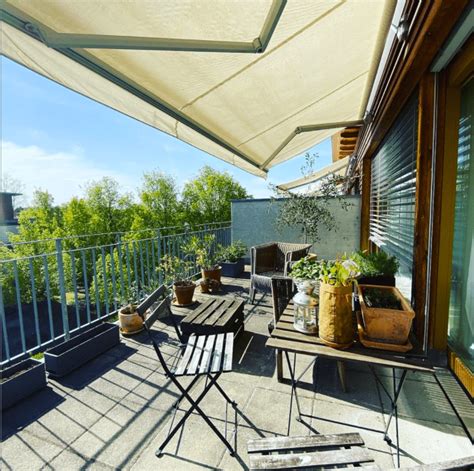Mastering Light and Shade: A Guide to Balanced Balcony Gardening
Creating the perfect balance of light and shade on your balcony can significantly impact the success of your urban gardening efforts. Whether you’re an experienced gardener or just starting out, understanding how to manage sunlight and provide shade is key to a thriving balcony garden. This article dives deep into the principles of light balance, optimal plant selection, and practical tips for managing light exposure in container gardening settings.
Key Concepts in Balcony Light and Shade Management
- Light Balance: Finding the right amount of light for various plants on your balcony.
- Sunlight Requirements: Different plants have specific needs regarding direct, indirect, or filtered sunlight.
- Shade Solutions: Techniques to provide enough shade without blocking essential light.
- Plant Care: How to ensure your plants thrive despite varied light conditions.
Historical Context of Urban Balcony Gardening
Urban gardening has a rich history dating back to ancient civilizations where rooftop and courtyard gardens were prevalent in cities like Babylon. However, the modern concept of balcony gardening began gaining momentum in the late 20th century due to increased urbanization and limited outdoor space. Initially, balcony gardening focused on ornamental plants, but over time, the practice has evolved to incorporate vegetables, herbs, and small fruit trees. Managing light and shade has always been crucial, given that balconies often face buildings or structures that can obstruct light. The advent of innovative gardening tips and technologies has made it easier for city dwellers to strike the perfect light-shade balance.
Current State Analysis: The Role of Sunlight and Shade on Balconies
The sunlight requirements for plants are a primary consideration in balcony gardening. Depending on your balcony’s orientation—north, south, east, or west—the amount of sunlight it receives throughout the day can vary significantly. A north-facing balcony may need creative solutions to boost light exposure, while a south-facing balcony may require additional shading techniques to prevent plants from burning in intense sunlight.
Here are some strategies based on different balcony orientations:
| Orientation | Sunlight | Suggested Plants | Shade Solutions |
|---|---|---|---|
| North-facing | Low direct sunlight | Ferns, hostas, moss | Reflective surfaces to amplify light |
| South-facing | High direct sunlight | Succulents, tomatoes, herbs | Shade cloths, pergolas |
| East-facing | Morning sunlight | Herbs, lettuce, spinach | Strategic use of taller plants to diffuse light |
| West-facing | Afternoon sunlight | Peppers, lavender, rosemary | Plant vines or use trellises for natural shading |
Practical Applications of Light and Shade Management
Balancing light and shade can be achieved through a combination of plant positioning, container types, and innovative shading techniques. For example, placing larger plants or trees in specific spots can naturally provide shade for more delicate plants. Using reflective surfaces or mirrors can help redirect light into shadier areas of your balcony, ensuring an even distribution of sunlight.
Additional Tips for Light and Shade Management:
- Rotate containers every few weeks to ensure even light exposure for all plants.
- Install adjustable awnings to control the amount of sunlight based on the time of day.
- Use lightweight, mobile containers to easily move plants as needed throughout the season.
Case Studies: Successful Balcony Gardens in Urban Settings
Below are examples of how urban gardeners have successfully balanced light and shade:
| Location | Challenge | Solution | Outcome |
|---|---|---|---|
| New York City | High-rise buildings blocking light | Mirrors and reflective materials to amplify sunlight | Balanced light for sun-loving plants |
| San Francisco | Fog and low light conditions | Selected shade-tolerant plants like ferns and begonias | Thriving low-light garden with minimal intervention |
| Los Angeles | Intense afternoon sun | Installed a retractable awning and used drought-resistant plants | Reduced heat stress and healthier plants |
Stakeholder Analysis: Who Benefits from Balanced Balcony Gardens?
- Homeowners: Maximize use of outdoor space for aesthetic and practical gardening purposes.
- Urban Communities: Greener balconies contribute to better air quality and urban biodiversity.
- Plant Nurseries: Increased demand for plants suited for diverse light conditions.
- Environmentalists: Promote sustainable gardening in urban environments.
Implementation Guidelines for Balcony Gardeners
To successfully balance light and shade in your balcony gardening endeavors, follow these steps:
- Evaluate your balcony’s light conditions: Use a sunlight meter or track sunlight exposure throughout the day to identify high and low light areas.
- Select appropriate plants: Choose plants with similar sunlight requirements to avoid overexposure or insufficient light.
- Implement shade solutions: Install awnings, umbrellas, or use taller plants to create shaded zones for light-sensitive species.
- Rotate and reposition: Regularly move containers to ensure all plants receive adequate light and prevent one side from becoming overexposed.
Ethical Considerations in Balcony Gardening
Balcony gardening also raises ethical questions. One of the main considerations is water usage, particularly in urban environments facing drought conditions. To mitigate this issue, gardeners can use drought-resistant plants and install water-efficient irrigation systems. Additionally, the use of non-toxic, organic fertilizers and pesticides is essential to prevent harm to local wildlife and maintain sustainable gardening practices.
Limitations and Future Research in Light and Shade Management
While managing light and shade is key to a successful balcony garden, there are limitations. Certain balcony orientations, such as north-facing spaces in dense urban areas, may never receive enough natural light for certain types of plants. Future research could explore the potential of artificial light solutions for such spaces. Additionally, innovations in vertical gardening and smart technology, such as automated shading systems, could further optimize light management for urban gardeners.
Expert Commentary on Light and Shade Balance in Balcony Gardening
Balcony gardening experts emphasize the importance of understanding your specific environment when planning your garden. As Dr. Laura Greenfield, an urban horticulturist, explains, “Light balance is not just about avoiding too much sun or shade; it’s about creating micro-environments where plants can thrive together. The right combination of plant selection and light management can turn any balcony into a green oasis.”
John Harris, a garden design consultant, also highlights the growing trend of using multifunctional shading solutions: “We’re seeing more gardeners integrate retractable awnings, pergolas, and even solar panels as part of their shading systems. These innovations help balance sunlight requirements while contributing to overall sustainability.”


